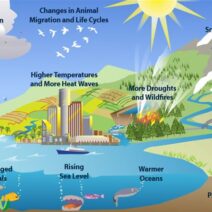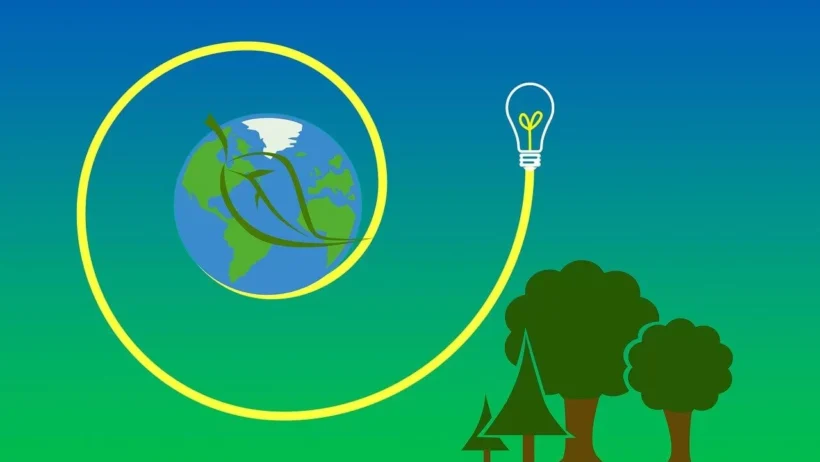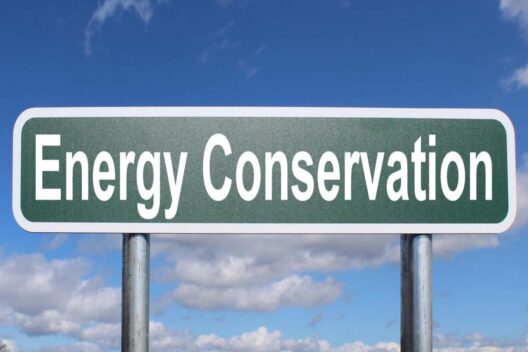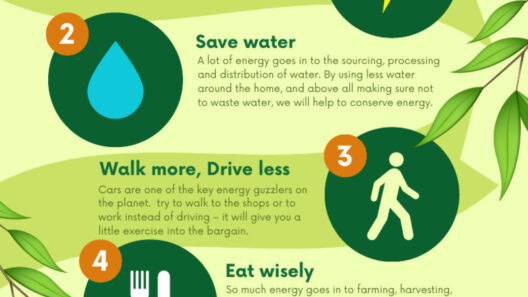In a world where energy consumption is rampant and the effects of climate change become increasingly ominous, the question arises: What do you do to conserve energy? If you haven’t thought about it yet, now might be the perfect time to embark on a quest for a more sustainable lifestyle. Imagine taking on the challenge of reducing your carbon footprint! It may seem daunting, but simple steps can lead to significant impact.
Firstly, let’s delve into the role of household appliances. Have you ever pondered the energy efficiency of your devices? Most modern appliances come with energy labels that indicate their electricity consumption. When the time comes to replace older units, opting for Energy Star-rated appliances can be a game changer. These models not only decrease energy usage but also promise savings on your utility bills—an enticing prospect for any budget-conscious individual.
Next, let’s talk about light. Yes, the humble bulb is often overlooked in discussions about energy conservation, but the switch from incandescent to LED lighting is a transformative act that you might want to consider. LEDs consume a fraction of the energy and last much longer, thus reducing the need for frequent replacements. Picture this: instead of frequently buying new bulbs, you could be enjoying the serene glow of energy-efficient lighting for years to come. But here’s a playful challenge—try replacing every incandescent bulb in your home with an LED over the next month. Will you rise to the occasion?
Furthermore, the demeanor of your home environment plays a pivotal role in energy conservation. Insulation is crucial, yet often neglected. A well-insulated home regulates temperature efficiently, lessening the burden on heating and cooling systems. You might want to explore adding insulation to attics and walls or sealing air leaks around doors and windows. Could you imagine the comfort of a well-insulated home during the harsh winter months, where warmth envelops you without the guilt of excessive energy usage? The idea is not merely appealing; it’s an ethical choice that beckons you to take action.
Let’s move beyond the interiors of your home and onto a topic everyone can relate to: heating and cooling practices. The thermostat is a powerful tool in your arsenal. Setting it a few degrees lower in winter and higher in summer can lead to substantial energy savings. It’s a small adjustment that yields bounteous benefits. Think of it as an opportunity to challenge yourself—over the next few weeks, can you endure a slightly cooler home in winter or a warmer atmosphere during summer? How does it feel to live slightly outside your comfort zone for the sake of Mother Earth?
Incorporating smart technology can prove beneficial as well. Smart thermostats allow for precise control over your heating and cooling systems, adjusting settings based on your routines. This innovation not only enhances comfort but also maximizes efficiency. Connect this with a playful challenge: can you program your smart devices to reduce energy consumption during peak hours? This not only tests your tech-savvy skills but also contributes to a more sustainable future.
Now, have you ever considered your energy usage while cooking? The choice between conventional ovens and microwaves can be revealing. Microwaves, particularly for smaller meals, generally consume less energy than traditional ovens. Furthermore, utilizing pressure cookers and slow cookers can also result in energy conservation. Challenge yourself to craft a week’s worth of dinner recipes that employ these energy-efficient cooking methods. The culinary creativity that arises could surprise you!
Water usage is yet another significant factor in energy conservation. Heating water consumes a considerable amount of energy. Therefore, regulating your water heater’s temperature to a comfortable but efficient setting can lead to meaningful savings. Additionally, consider switching to low-flow fixtures which reduce water consumption without sacrificing performance. Imagine the collective impact if everyone in your community joined you in lowering their water heater temperatures. What a ripple effect that could be!
In our pursuit of a greener lifestyle, attention to transportation is also paramount. Carpooling, public transportation, biking, or walking are all viable alternatives to solo driving. Each time you choose an alternative mode of transport, consider it a small yet significant stride toward better energy conservation. Can you challenge yourself to reduce your car usage by even one day a week? The benefits extend beyond energy conservation; they also enhance air quality and promote a healthier lifestyle.
Lastly, let’s not forget the importance of ensuring that our actions inspire others. Engaging in conversations about energy conservation can stir curiosity and urge others to contemplate their habits. Share your simple steps and challenges on social media or within your community. By being the beacon of change, could you ignite a movement towards a collective effort of energy conservation? All it takes is a whisper of intention, and soon enough, it may evolve into a chorus of action.
In conclusion, while the path toward energy conservation might seem labyrinthine, embracing a handful of simple steps can yield monumental results. By challenging yourself and those around you to explore new energy-saving avenues, you not only contribute to a sustainable future but also foster a culture of awareness and responsibility. What will you do to conserve energy today? The answers lie within your commitment to forging a greener lifestyle, one decision at a time.








